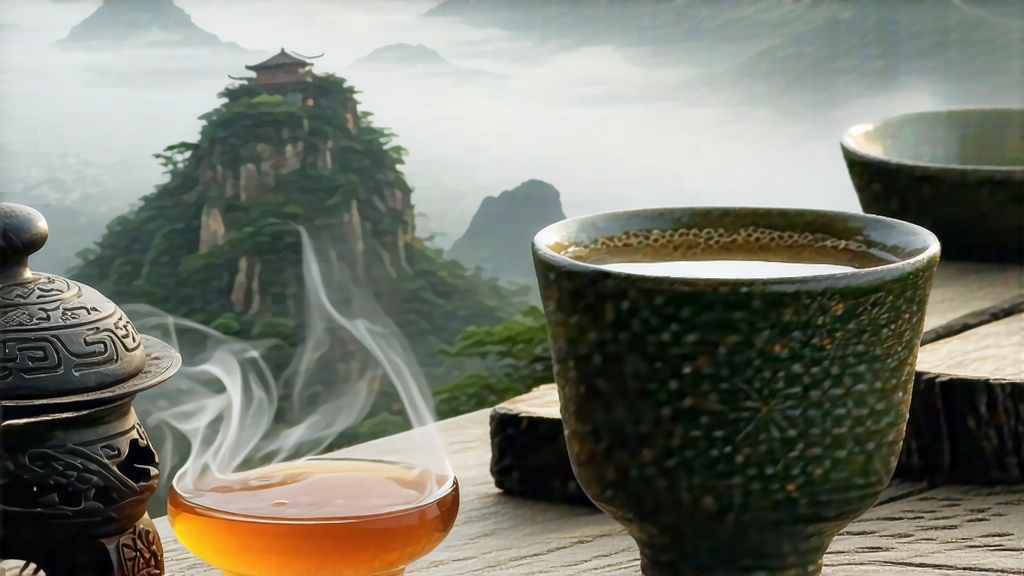
If green tea is China’s garden and pu-erh its cellar, then Phoenix Dancong is the country’s open-air perfume laboratory. Nestled in the 1,400-metre granite spires of Phoenix Mountain (Fenghuang Shan) in northern Guangdong, this oolong family has been seducing traders, poets and emperors since the Song dynasty. Locals still tell the story of the Song emperor who, fleeing the Jurchen invasion, tasted a tea so fragrant that he named it “Song cultivar” (Song Zhong) and took scions back to Hangzhou—only to watch them fail, proving that the scent is inseparable from the mist, soil and stone of its birthplace.
Phoenix Dancong is not a single tea but a mosaic of over 80 aromatic “fragrance types” (xiang xing), each named after the flower or fruit it is said to evoke—honey-orchid (mi lan xiang), almond (xing ren xiang), ginger flower (jiang hua xiang), night-blooming jasmine (ye lai xiang), and the elusive “duck-shit aroma” (ya shi xiang) that began as a farmer’s practical joke to deter thieves. All descend from the Shui Xian (“water sprite”) genetic line, but centuries of seed propagation, single-tree selection and sexual reproduction have created a living library of flavour. A single mountainside can host trees whose leaves, when tasted side-by-side, recall lychee, cinnamon, pomelo peel or warm cream.
The craft begins in the cool pre-dawn of late April. Pickers climb terraces so steep that bamboo ladders are lashed to the rock; only two leaves and a bud are taken, when the dew is still intact to protect the enzymes. The harvested shoots are spread no thicker than two fingers on wicker trays and wilted under the high-mountain sun for 20–30 minutes, just long enough for the edges to turn jade-green and the aroma to shift from cut grass to ripe peach. Indoors, the leaves are alternately shaken and rested in repeated “green-making” cycles that last through the night. Each toss bruises the margins, oxidising polyphenols into floral lactones; each rest allows the internal moisture to migrate outward, preventing sourness. By dawn the leaf is crimson at the rim, emerald at the vein—an oolong’s yin-yang signature.
Firing is where Phoenix Dancong becomes a time-capsule. Traditionally the leaves are rolled into tight, charcoal-black strips by hand on low-temperature bamboo trays, then baked over a lychee-wood ember whose heat never exceeds 80 °C. The baker rakes the ash every ten minutes, judging the temperature by the colour of his palm when held two fists above the basket. This slow dehydration can last 30 hours, interrupted by 24-hour “cooling naps” that let residual moisture redistribute. The result is a leaf that looks almost burnt, yet the moment hot water hits it the cell walls rehydrate and release a kaleidoscope of volatile compounds—linalool, geraniol, indole—locked in by the charcoal’s infrared kiss.
To brew Phoenix Dancong like a Chaozhou merchant, start with a 100 ml white porcelain gaiwan; its neutral glaze will not steal fragrance. Use 5 g of leaf—about two heaping teaspoons—rinsed for barely two seconds in water just off the boil (95 °C). The first infusion should last 15 seconds and is poured off into a fairness pitcher; this “awakening” liquor is often the most perfumed, so offer it to guests first. Subsequent steeps lengthen by five-second increments; a well-baked Song Zhong will yield 9–12 infusions, each revealing a different stratum: top notes of orchid and honey, a mid-palate of roasted almond, and a mineral finish that locals call “stone bone” (shi gu)—the taste of the granite parent rock. When the flavour fades, drop the spent leaves into a cold mason jar overnight; the next morning the liquor is a naturally sweet iced tea with hints of peach schnapps.
Professional cupping follows a stricter choreography. Five grams are infused for three minutes in a 110 ml white porcelain set, then evaluated under north-facing daylight. The dry leaf should show “three colours”—iron black, chestnut brown and frog-back green